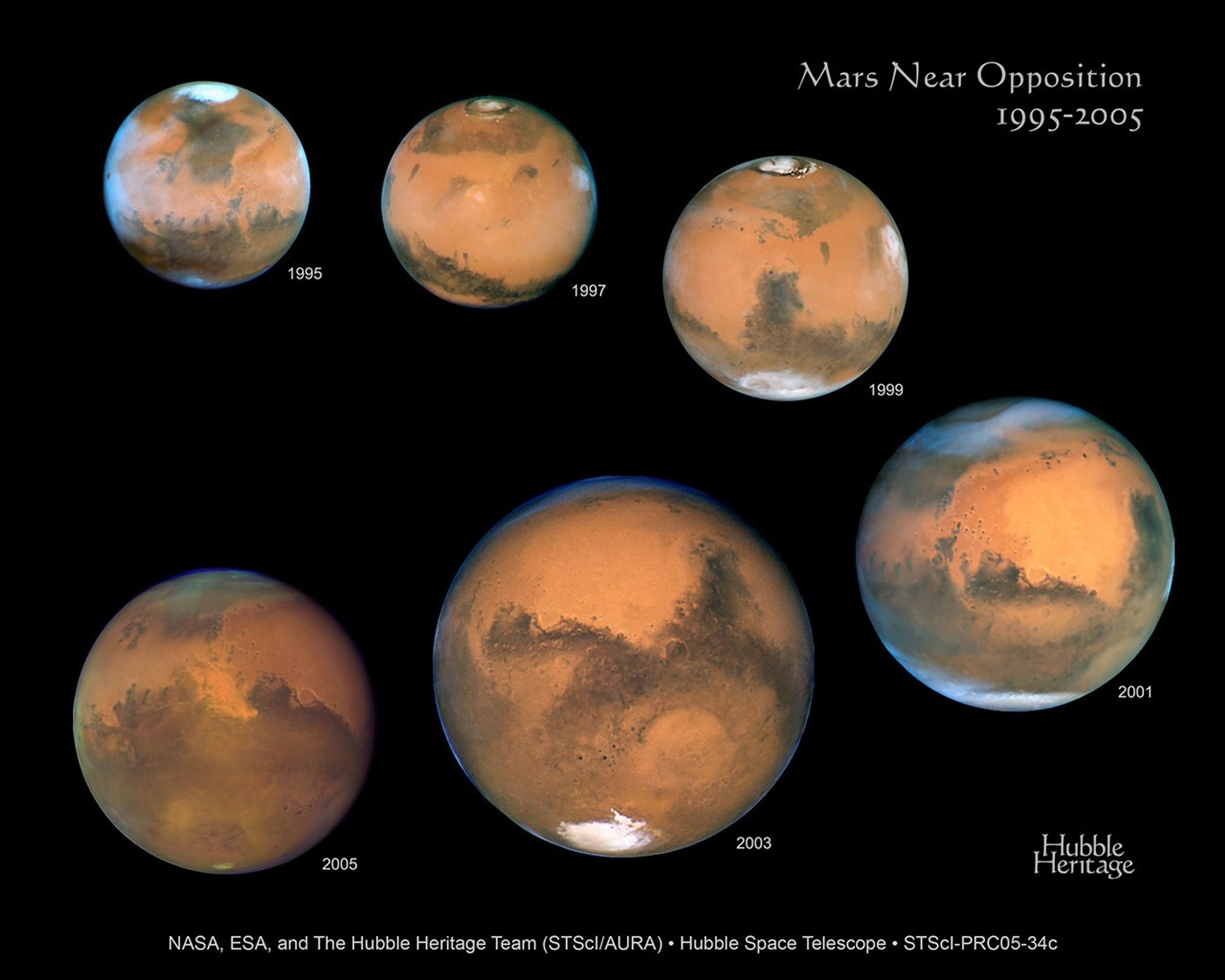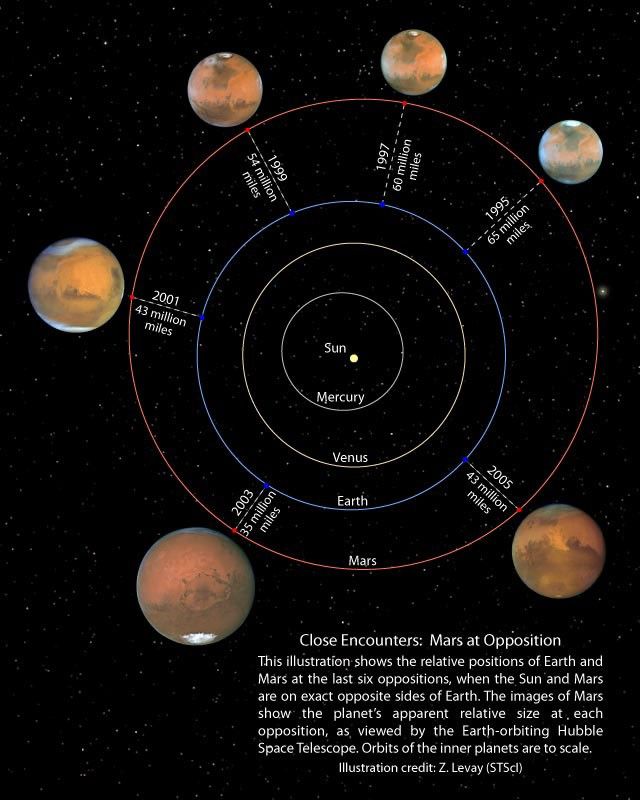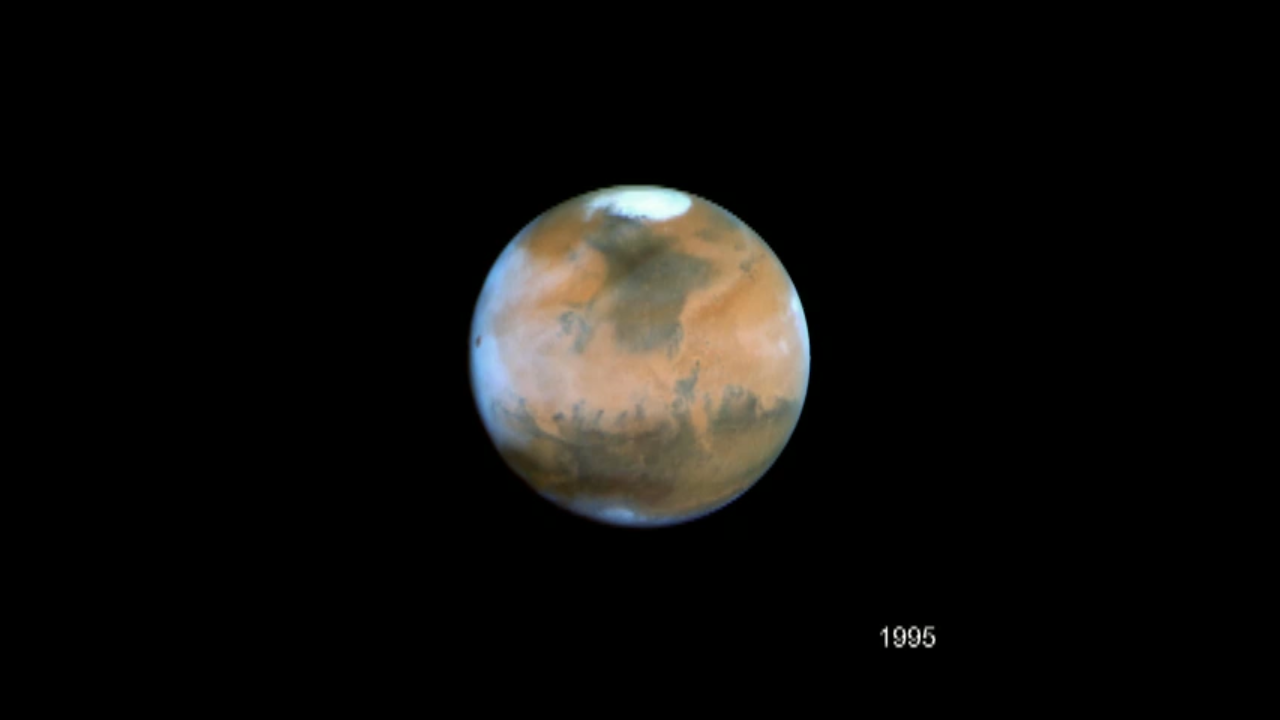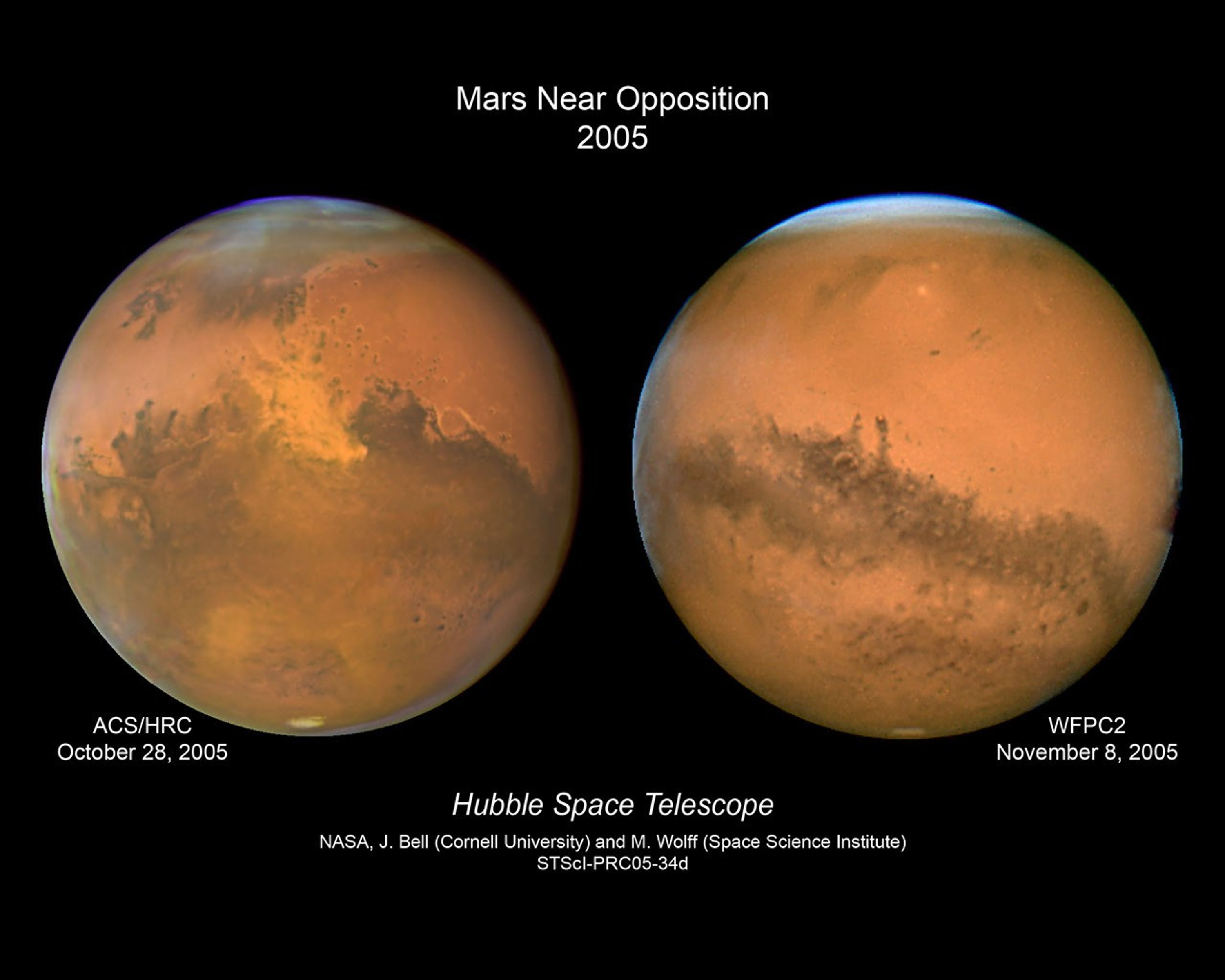1 min read
Dust Storm on Mars

Hubble images of the Sinus Meridiani region taken on October 28, 2005 show evidence of a regional dust storm. A comparable Hubble image taken on June 26, 2001 of the same region shows a storm-free environment. The dust storm, which is about 930 miles (1500 km) long, is about the size of the states of Texas, Oklahoma, and New Mexico combined. Ground-based amateur telescopes have been watching the storm grow and evolve.
This storm has been churning in the planet's equatorial regions for several weeks now, and it is likely responsible for the reddish, dusty haze and other dust clouds seen across this hemisphere of the planet in views from Hubble, ground-based telescopes, and the NASA and ESA spacecraft studying Mars from orbit. The occurrence of the dust storm in close proximity to the NASA Mars Exploration Rover Opportunity's landing site in Meridiani Planum has the potential to cause problems for the rover. Specifically, if the dust in the atmosphere gets thick enough it could block some of the sunlight needed to keep the rover operating at full capacity.
The 2005 image was taken with Hubble's Advanced Camera for Surveys. The 2001 image was taken with Hubble's Wide Field Planetary Camera 2. Both images were taken within weeks of closest approach/opposition of the planet. The smallest resolvable features in the images (small craters and wind streaks) are about 12 miles (20 km) across.
About the Object
- DistanceDistanceThe physical distance from Earth to the astronomical object. Distances within our solar system are usually measured in Astronomical Units (AU). Distances between stars are usually measured in light-years. Interstellar distances can also be measured in parsecs.[Distance from the Sun] The semi-major axis of Mars' orbit about the sun is 1.52 Astronomical Units (A.U.) or 142 million miles (228 million km).
About the Data
- Data DescriptionData DescriptionProposal: A description of the observations, their scientific justification, and the links to the data available in the science archive.
Science Team: The astronomers who planned the observations and analyzed the data. "PI" refers to the Principal Investigator.The 2005 image (right) was created from HST proposal 10770: K. Noll (The Hubble Heritage Team, STScI), J. Bell (Cornell Univ.), M. Wolff (Space Science Inst.), H. Bond, C. Christian, L. Frattare, F. Hamilton, W. Januszewski, Z. Levay, M. Mutchler, and T. Royle (The Hubble Heritage Team, STScI). - InstrumentInstrumentThe science instrument used to produce the data.HST>WFPC2 (left) and HST>ACS/HRC (right)
- Exposure DatesExposure DatesThe date(s) that the telescope made its observations and the total exposure time.June 26, 2001 (left) and October 28, 2005 (right)
- FiltersFiltersThe camera filters that were used in the science observations.WFPC2: F410M (410 nm ), F502N (502 nm), F588N (588 nm), F631N (631 nm), F673N (673 nm), and F1042N (1042 nm) ACS/HRC: F250W (250 nm), F502N (502 nm), F658N (658 nm)
- Object NameObject NameA name or catalog number that astronomers use to identify an astronomical object.Mars
- Object DescriptionObject DescriptionThe type of astronomical object.Planet, Dust storm
- Release DateNovember 3, 2005
- Science ReleaseMars Kicks Up the Dust as it Makes Closest Approach to Earth
- CreditNASA, ESA, The Hubble Heritage Team (STScI/AURA), J. Bell (Cornell University) and M. Wolff (Space Science Institute)
Related Images & Videos

Hubble's Visual History of Mars
The orbits of the planets Earth and Mars provide a geometric line up that is out of this world! Every 26 months Mars is opposite the Sun in our nighttime sky. Since the repair of the Hubble telescope in 1993, Mars has been at such an "opposition" with the Sun six times. A color...

Close Encounter: Mars at Opposition
This illustration shows the relative positions of Earth and Mars at the last six oppositions, when the Sun and Mars are on exact opposite sides of Earth. The images of Mars show the planet's apparent relative size at each opposition, as viewed by the Earth-orbiting Hubble Space...

Mars Image Showing the High Resolution Camera's "Occulting Mask"
The Advanced Camera for Surveys on Hubble Space Telescope includes two cameras, the Wide Field Channel (WFC) and the High Resolution Channel (HRC). Images from the WFC are roughly 4,000 pixels square with a scale of roughly 0.05 arcseconds per pixel. Images from the HRC are...

Hubble Views Mars Through the Years
Every 26 months Mars is opposite the Sun as seen from Earth. Since the repair of the Hubble telescope in 1993, Mars has been in opposition with the Sun six times. These dissolve sequences of each Mars opposition from 1995 to 2005 showcases the beauty and splendor that is 'The...
Share
Details
Claire Andreoli
NASA’s Goddard Space Flight Center
Greenbelt, Maryland
claire.andreoli@nasa.gov








































